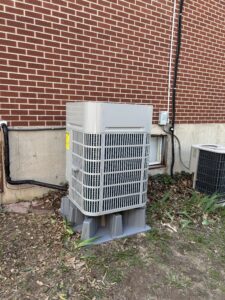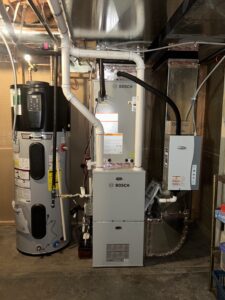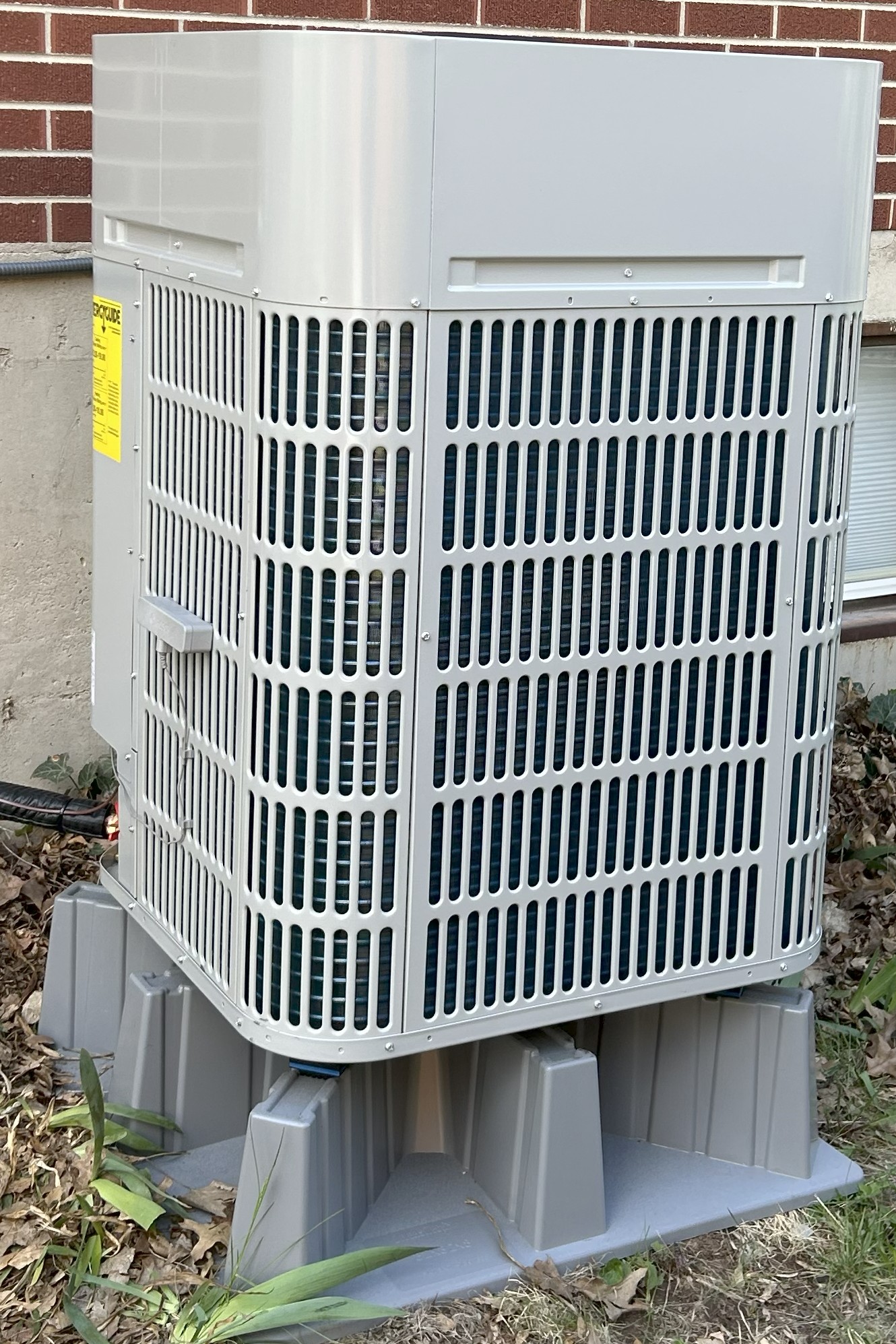Over the past few years, heat pumps have become the darling of the HVAC and building electrification world. The narrative is clean, elegant, and powerful: ditch your gas furnace, plug in a high-efficiency electric heat pump, and help save the planet.
But here’s my unpopular opinion: in places like Boulder and Denver, Colorado — with our moderately carbon-intensive grid and cold winters — a dual fuel system (a heat pump paired with a backup gas furnace) is actually better for the environment than going all-in on electric.
Let’s walk through the numbers.
The Scenario: Heating and Cooling a 1970s Home
To make this comparison real, we modeled three heating systems for a typical 2,000-square-foot home built in the 1970s in Boulder or Denver.
- Gas Furnace (80% AFUE) + Central AC (13 SEER) – Standard System that Almost Everyone Has in their Home Currently
- All-Electric Heat Pump (Cold climate, 20 SEER, with strip heat backup)
- Dual Fuel System (Cold Climate 20 SEER Heat pump runs above 25°F, 96% AFUE gas furnace below)
This example home has an estimated annual heating load of 50 MMBTU and a cooling load equivalent to 2.5 tons of AC running 1,000 hours per year (about 30 MMBTU).
We accounted for local conditions: altitude derating, real-world efficiency, line losses in electric transmission, and upstream methane leakage from natural gas.
Emissions: Dual Fuel Wins (Surprisingly)
You might assume that the all-electric heat pump system would have the smallest carbon footprint — but it doesn’t. Here’s why:
- Boulder’s electricity still carries a moderate carbon intensity of around 0.475 kg CO₂e per kWh. So, even if you aren’t burning fossil fuels in your home, you’re still relying on them at the power plant.
- The all-electric heat pump handles most of the heating efficiently — but when the temperature drops below 25°F, strip heat kicks in, using electricity at a COP of just 1.0 (i.e., 100% efficient, like a toaster). This is based on our experience with real customers. The typical heat pump tonnage is 3 ton for this size of home.
- The dual fuel system, in contrast, uses the heat pump for ~85% of the heating season, and only relies on the gas furnace when temperatures drop. The result is a blended system that uses gas wisely, sparingly, and only when it’s more efficient than the grid.
Here’s how the total annual emissions stacked up (heating + cooling):
- Gas Furnace + 13 SEER AC: 5,575 kg CO₂e
- Heat Pump + Strip Heat: 4,893 kg CO₂e
- Dual Fuel + 20 SEER Heat Pump: 4,228 kg CO₂e
That’s right: the dual fuel system produces 665 kg less CO₂e than the all-electric heat pump system, and nearly 12% less than the gas furnace setup.
Utility Costs: Not Just an Emissions Win
When it comes to operating costs, dual fuel also strikes a solid middle ground:
- Gas Furnace + AC: $1,024/year
- Heat Pump Only: $1,338/year
- Dual Fuel: $1,095/year
You save over $240 per year versus a heat pump-only system while emitting less CO₂. And because the dual fuel setup uses a 20 SEER air conditioner, it also cuts cooling energy use by 35% compared to a standard 13 SEER unit.
But Wait — Isn’t All-Electric the Future?
In the long term, yes. As our electric grid gets cleaner (Xcel Colorado is targeting 80% carbon-free electricity by 2030), all-electric systems will begin to pull ahead in carbon performance — especially if paired with solar or battery storage.
But today, an all-electric system in a cold climate with a moderately clean grid can actually produce more emissions than a hybrid system that uses gas sparingly and smartly.
And for homes where full weatherization or high-COP heat pumps aren’t feasible due to cost or building constraints, dual fuel systems are a pragmatic, lower-emission solution — right now. I will say for smaller homes, around 1,200 square feet these numbers will start to strongly show all electric heat pump as the winner. Also, in the same way as we look at a 4,000 square foot home, the dual fuel emissions, cost savings, and utility costs are an obvious choice.
Final Thought
Decarbonization isn’t about ideology — it’s about results. The best system for your home and the planet might not be the “purest” one. Sometimes, a hybrid approach — using electricity when it’s clean and gas when it’s efficient — gives us the best of both worlds.
So yes, it’s an unpopular opinion. But if we’re serious about reducing real-world emissions in the near term, dual fuel deserves more love.
Want to dig deeper? Contact me at info@coecomech.com for a detailed breakdown or modeling for your specific home and location.


